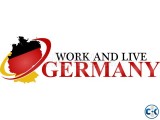My ClickBD
arabic language course in uttara
Lowest price in Bangladesh:
Seller info
Sold by:
SHIELDLANGUAGEDEPARTMENT
Member since:
01 Feb 2018
Location:
Dhaka Uttara
Safety tips:
Don’t pay in advance
Meet in a safe & public place
Meet in a safe & public place
Description
DESCRIPTION for arabic language course in uttara price in Bangladesh
This is a comprehensive series designed to teach Arabic to English-speaking children. It offers the latest methods of second-language instruction, with special emphasis on building the four linguistic skills needed to learn a language: Learn Arabic before go for Umrah or Hajj (Makkah or Madina [Saudi Arabia]) Arabic is one of the most spoken languages in the world with over 200 million speakers. It is spoken in 24 countries and is the official language of all the countries of northern Africa, the Arabian peninsula, and in much of the Middle East, including Iraq, Syria, Lebanon, Kuwait, Bahrain and Saudi Arabia. As the religious language of Islam, it is also the second language of millions of Muslims around the world. It is one of the six official languages of the United Nations. The Arabic language can be divided into three main categories: Quranic (Classical Arabic): This is the Arabic of Islam's holy book, the Quran (or Koran). It is archaic, which means that it is very old, dating from the late 600's when the Quran was written down. It is used in the Quran and in the holy books of Islam. No one speaks Classical Arabic as a native, nor is it used for conversation. It is learned primarily for reciting and reading the Quran. Formal or Modern Standard Arabic: This is an updated version of Classical Arabic which is taught in the schools of Arab countries. It is the language of the news, modern literature and education. No one speaks it as a native language but it is used as a common language for people who speak very different varieties of Arabic or by second-language speakers. Spoken or Colloquial Arabic: There are many local varieties of Arabic, many languages in their own right. The most widely spoken and understood of these is Egyptian Arabic. Other distinct varieties are Iraqi, Levantine (Lebanese/Syrian/Jordanian/Palestinian) and Moroccan Arabic.
|
































